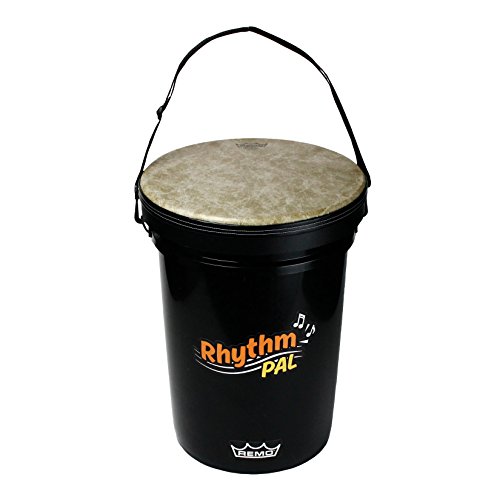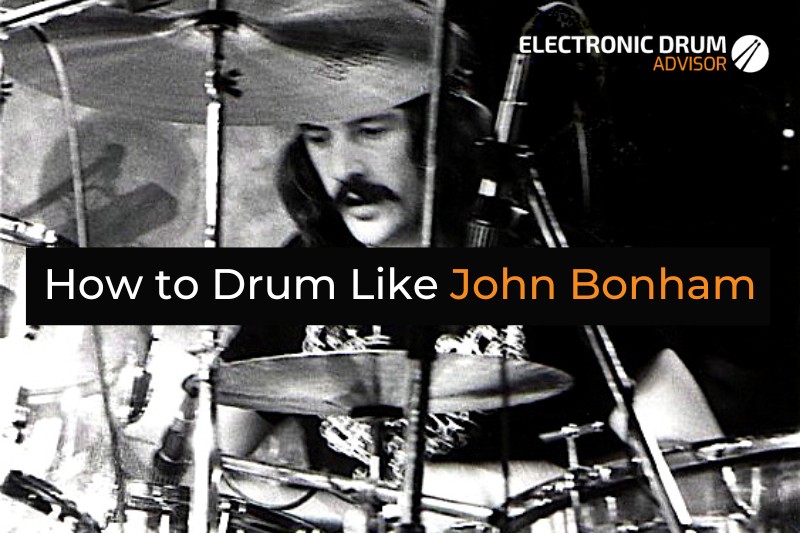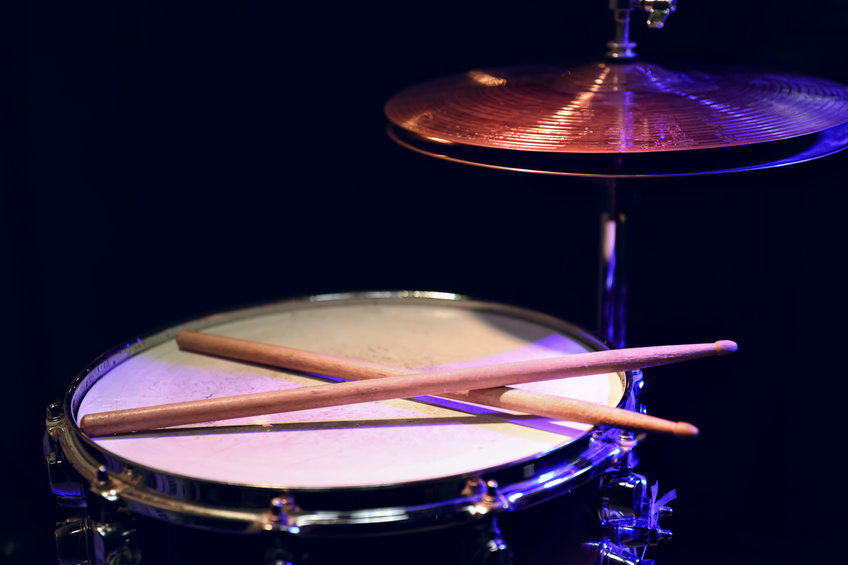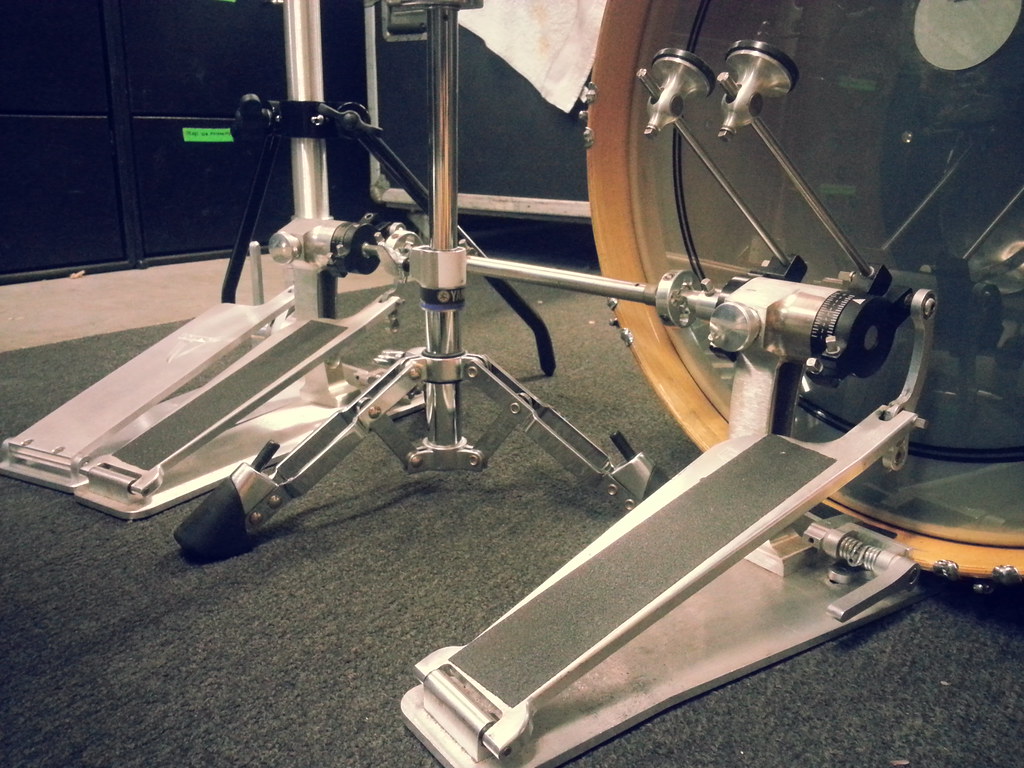How to Play Bucket Drums (Tips/Beats, Where to Get Them, Accessories)
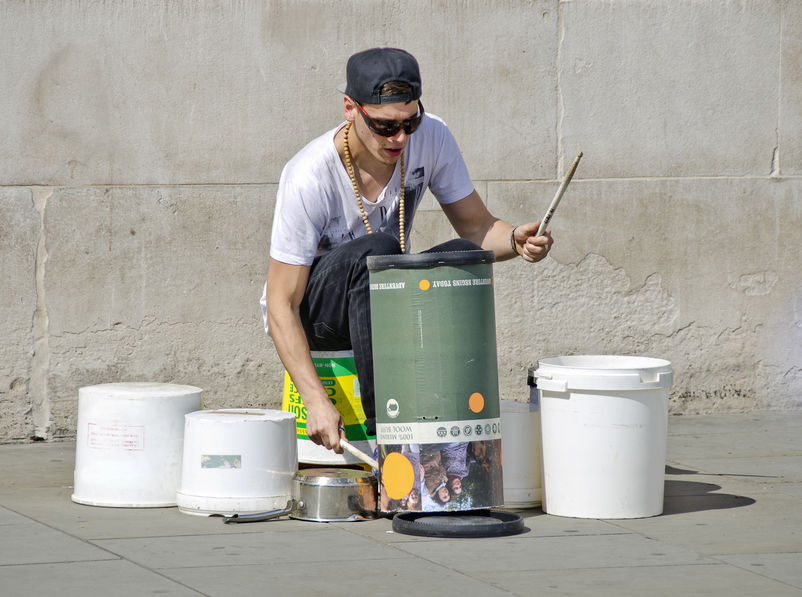
Bucket drumming started as a cheap and fun way to practice and eventually became a uniquely distinct and full-blown street art that is now a genre in itself. It is solely about showmanship, creativity, crazy stick work, and fast rhythms, making it an experimental way of drumming.
This article lays down the fundamental concepts, essential equipment, and important tips/techniques of bucket drumming.
Contents
- Bucket Drumming At a Glance
- How to play bucket drums?
- What buckets are used for Bucket Drumming?
- Remo RP061370SD099 Rhythm Pal
- Remo Rhythm Lid
- Best Drumsticks for Bucket Drumming
- Vic Firth American Classic 5A Drum Sticks
- Vic Firth American Classic 7A Drumsticks | Medium Taper | 15.5” Length
- Using Cymbals for Bucket Drumming
- Using the feet while bucket drumming
- Some tips and creative ideas for bucket drumming
- Where did bucket drumming originate?
- Conclusion
Bucket Drumming At a Glance
- Bucket drumming began as a cost-effective and enjoyable practice method, evolving into a distinct street art and genre.
- It emphasizes showmanship, creativity, intricate stick work, and rapid rhythms.
- To play bucket drums, you use the center for deep kick-like notes and the rim as a snare.
- Essential equipment includes a 4 or 5-gallon bucket, drumsticks (5A or 5B are recommended), and creative options like cymbals and using your feet.
- Bucket drumming originated in New York in the 80s and has grown into a global street art phenomenon.
- Experiment with different bucket setups and creative techniques to enhance your bucket drumming experience.
- Bucket drumming is a fun and expressive style of percussion that’s easily portable and perfect for self-expression and street performances.
How to play bucket drums?
If you play the drums or percussion, shifting to bucket drumming is just a new physical approach to playing beats you already know. The basics are straightforward – the center of the bucket produces a deep note similar to the kick drum, and the bucket’s rim will play the role of a snare.
Since you are using your hand to play the kick instead of your foot, you won’t be able to play the hi-hat part of beats constantly. Some artists use a more nuanced approach wherein they hit the concrete floor to mimic the hi-hat or tap a small tin can to play the clave (Latin rhythms). But if you are new to bucket drumming, start with elementary kick-snare beats you already play on the drums and gradually increase the complexity.
It would be better to approach bucket drumming with a percussion or military band mindset. Better yet, approach it like bucket drumming – the best of both worlds. Check out the video above of the 10 most common beats used in bucket drumming to get started with some easy but impressive grooves.
What buckets are used for Bucket Drumming?
Bucket drummers often use a 4 or 5-gallon bucket (approx. 15 liters) that is available at the hardware section of Home Depot or Walmart.
These buckets are sturdy and very cheap, and you can easily stack them to get a variety of sounds. That being said, you could pretty much use anything from an old plastic canister to discarded paint buckets to get started.
Once you have all the buckets you need for your kit/setup, the first thing you should do is to get the bucket handle off. After that, put a few strips of duct tape along the bottom rim. Since you hit the bottom rim to get the snare sound, you will be playing it quite often. The duct tape will lessen the rim’s impact and improve your drumsticks’ lifespan.
You can get various sounds by hitting different areas on the same bucket or stacking buckets on top of each other. You can also use duct tape to sandwich some felt on the bottom surface (the one you will hit with the stick) to get some variations in sound. I also highly recommend getting some rope or drilling some vent holes in the buckets to keep them from air locking (being stuck) when you stack them for transport or storage.
I generally find buckets from the same company/brand are less likely to lock.
Keeping to the theme of bucket drumming, don’t forget to buy an additional bucket you will use as a throne. This bucket should be comfortable and sturdy enough to sustain your weight. You can also get a tiny bucket to store your drumsticks, mallets, and small percussions like tambourines, shakers, and Cabasa.
You can also check out Remo’s bucket drums catalog, which has a wide variety of buckets and ‘rhythm-lids‘ made especially for street/bucket drummers.
Best Drumsticks for Bucket Drumming
The bucket drumming technique is similar to the conventional technique for playing a drum set. The choice of sticks invariably boils down to personal preference. There are no special sticks for bucket drumming, but some special considerations can save you a lot of money in the long run.
Sticks can be a tricky pursuit when it comes to bucket drumming. Choosing something light will help you play faster, but the sticks will also break easily.
If you choose something heavy, it will last longer and sound louder, but it can dent and damage the bucket. Since the front end of drumsticks is tapered, they tend to crack or split fast. Due to this, there is a growing trend of playing with the back end of the stick.
I recommend starting with 5A (or 5B) drumsticks such as the Vic Firth American Classic 5A Drum Sticks. These offer a great weight balance; they are relatively strong while also still being light enough for subtle movements.
You can also consider 7A (or 7B) drumsticks. These are lighter and can allow you to play with greater speed.
However, keep in mind that these can break more easily. Therefore, it’s always good to have a thicker pair of drumsticks at hand.
Using Cymbals for Bucket Drumming
Most bucket drummers avoid using cymbals or hi-hats as they can significantly add to the cost and weight. A tap of the stick on concrete serves as a viable replacement for conventional hi-hats.
As for cymbals, you can opt for a petite cymbal stand with a splash. You can also add another medium-sized stand with a ride and a tambourine clipped to the stand for additional variety.
The essence of bucket drumming is to keep it simple and cheap. $3 buckets, remember? These additions will be expensive, making transportation and setup a little more tedious. But then again, adding a splash, ride, crash, or tambourine can spice up your playing.
Using the feet while bucket drumming
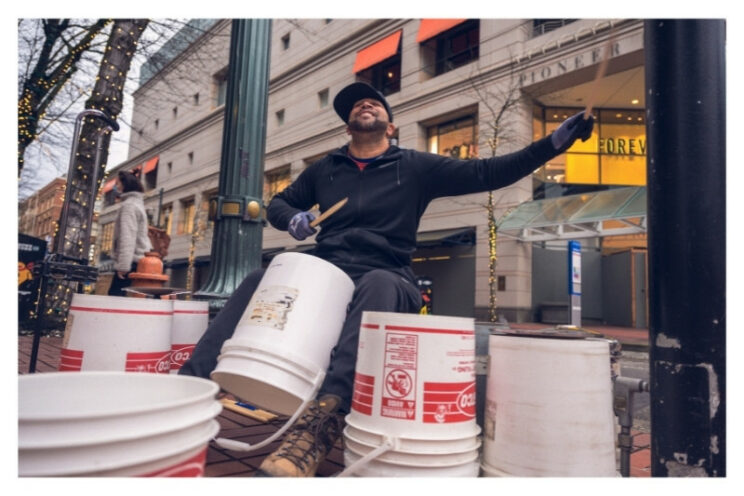
Generally, you get a deep and resounding ‘kick drum’ like note when you hit the center of the bucket. It can sound deeper if you place one foot on the side of the bucket and tilt it slightly upwards (lift one side above the ground).
You can even drill a small hole in the side of a bucket and put a wooden or fiber rod (or anything similar) through the hole. You can anchor your foot to the rod to lift the bucket and change the tonality of your hits.
Conversely, you can tuck your foot right next to the overhang where the bucket handle is fixed to lift the bucket. Some drummers also use a creative technique wherein they squeeze the bucket with both their feet to change the pitch of the hit.
Some tips and creative ideas for bucket drumming
Always play with good posture, i.e., a straight back and relaxed upper torso. Set up your ‘bucket kit’ so you don’t have to twist uncomfortably to reach any part of the kit.
There are no rules and no boundaries when it comes to bucket drumming. Get creative with your setup – use different bucket colors, sizes, and other junk paraphernalia in fun and innovative ways.
Everything from an old shoebox to a wooden crate is a game! If you have some experience with percussion, you can mix it up with a bongo set, a Cajon (which can also become your drum throne), and a medium-sized djembe.
Flamboyance goes a long way when it comes to street art. Try to spend some time mastering stick flips, fake spins, twirls, and tossing. This will have a grandiloquent visual impact on your audience. You can check out our detailed article on five easy drumstick tricks here for further information.
Finally, here are some useful accessories that you should check out:
Drum tape and stick grips – Better grip for your drumsticks and stops you from dropping your sticks Joran a performance.
Easy stick twirl – This is a popular item for people who like tricks while playing drums. The easy stick twirl makes it much easier to twirl your sticks without dropping them.
LED Light-Up Drumsticks – These are cool if you want a novelty pair of light-up drumsticks. It’s very good if you’re bucket drumming during the evening/night when it’s getting dark outside.
Where did bucket drumming originate?
The most notable wave of bucket drumming can be traced to New York in the 80s when people began using all kinds of pots, pans, and buckets to busk in the streets and subway tunnels.
The Bronx artist Larry Wright is considered the first noteworthy drummer who played buckets instead of a standard kit. Today, it has progressed into a distinct genre among street artists worldwide who command a cult following on online platforms and in music festivals.
As for the origins of bucket drumming… No one knows where it all started, but street performance is a centuries-old tradition, and different forms of bucket drumming may have been present in many different periods of history.
Check out this video of some great bucket drumming in action:
Conclusion
Bucket drumming is a unique style of percussion that has evolved over the years, with many drummers using them to complement their normal drum kit setup. It is an incredibly fun experience to play music on buckets, especially on the go or in public.
You can use different kinds of tools around your home to get started with bucket drumming. A pair of sticks is usually enough to get you going, though there is a multitude of accessories that can make the experience more pleasant.
Bucket drumming allows musicians to let loose their creative ideas in a new way while performing live music. Bucket drums are easily carried with one hand, allowing for easy movement around the streets of any city.

